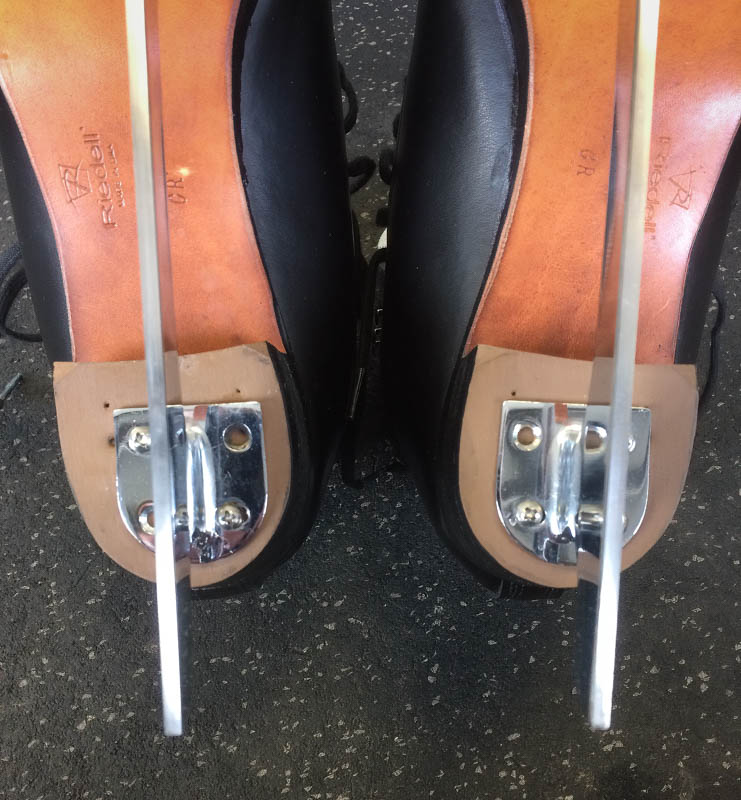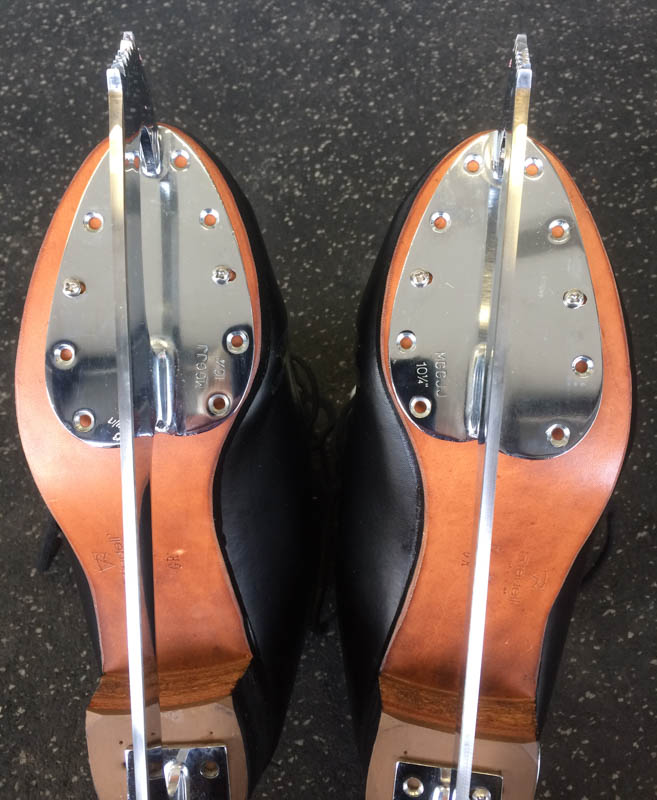I finally mounted blades to my new Riedell Fusion boots using just the temporary mounting screws. I tried skating for the first time this morning, and it did not go as well as hoped.
The first steps on the ice lasted about 10 feet, and I felt like a complete beginner. I could tell that blade position was off considerably. Both blades needed to be moved to the inside. I went back to the lobby, untied, and used a screwdriver to re-adjust blade position. I expected having to do an initial adjustment.
The second attempt to skate lasted about 30 yards until I returned to the lobby again for the screwdriver. Left blade was now OK, but I was still pronating on the right blade.
This time, I moved the right blade as far inside as possible and skated again. MUCH better, but even with the right blade adjustment against the limits, I was still pronating. The right bladed "shussshhhed" when gliding forward, and I could visually detect a little remaining pronation. I spent the last half hour just doing some stroking to break in the stiff boots despite the odd feeling.
When I got off the ice and compared the position of the right blade vs the left, I observed this (because the skates are inverted, the right skate is shown on the left)...

and this...

The right blade is obviously positioned well to the inside, much more than the left one, but it's still not enough.
I wonder why all of a sudden, the right blade needs to be so far inside to prevent pronation? I naturally supinate in street shoes, not pronate. The blades on my old skates were symmetrically positioned, looking much like the left blade is in the photos above.
I see three options:
1) Plug holes and re-drill more to the inside. Issues: Plugging is a hassle, plus the front mounting plate may overhang the sole after more adjustment.
2) Lengthen the temporary screw slots in the blade mounting plates. Issues: I might not be able to lengthen them enough at the heel plate, plus I'll still have the risk of plate overhang at the front.
3) Experiment with wedges or layers of tape under the outside edge of the insole. A friend is going to give me an unused Riedell wedge from their footbed kit. Issues: foam wedges will break down and collapse over time. Tape may turn gummy and creep.
I'm going for the easiest solution, the wedge under the insole, for now. I'm really having a hard time wrapping my head around why I need to move the right blade so far inside, and be located so differently from the left.